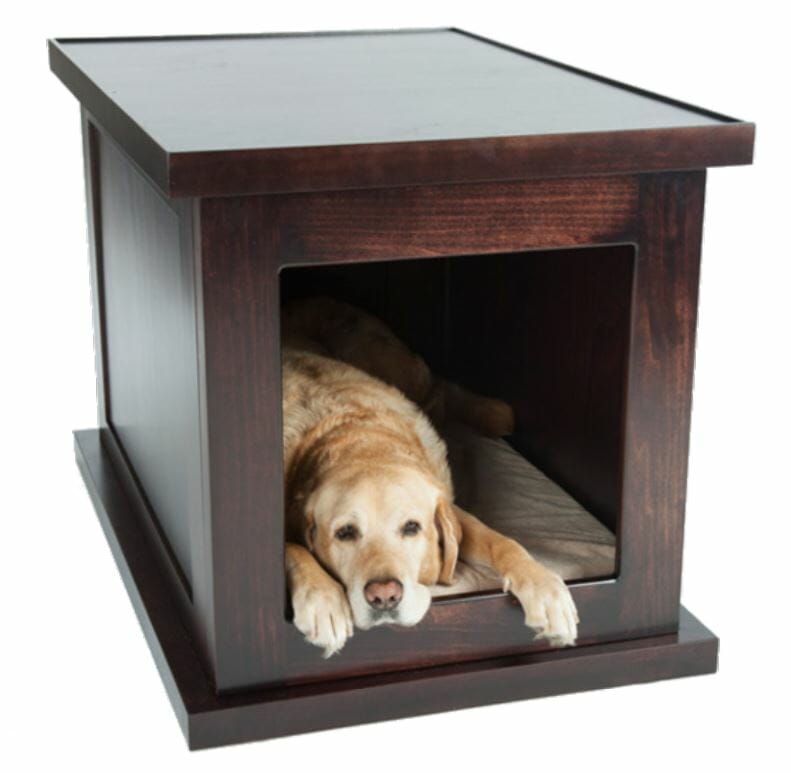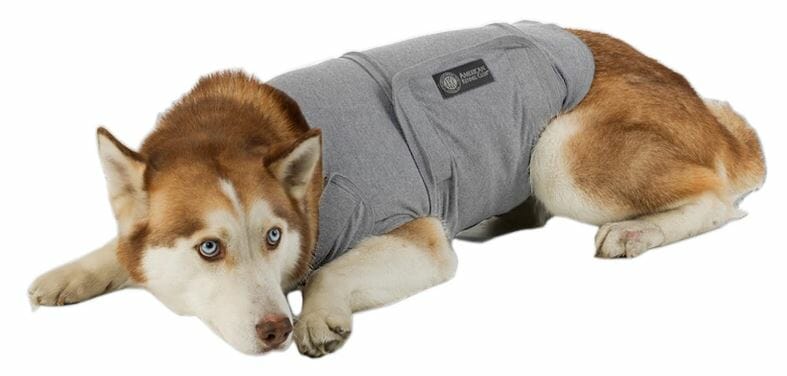Do you care for or own an anxious dog? Just like humans, our pets can and will experience anxiety at different points in their lives. When this happens, they sometimes have a harder time communicating their feelings to us. We can also misinterpret their behaviour and miss the opportunity to help them out.
In this Waldo’s Friends article, we tackle:
What is dog anxiety?
Anxiety is “the mind and body’s reaction to stressful, dangerous, or unfamiliar situations.” A dog can manifest anxiety when he is exposed to high-stress scenarios, visual stimuli, or major life changes. These include:
- Being abandoned, abused, or neglected by his owner
- Being placed in a high-stress environment with poor care and several animals
- Traveling or moving to another place
- Being left home alone
- Experiencing a change in family dynamic, routine, and/or lifestyle
- Being separated from loved ones
- Hearing loud noises such as fireworks and thunderstorms
- Being exposed to unfamiliar people or animals
- Getting older and experiencing a decline in perception, memory, learning, and awareness
How does a dog manifest anxiety?
According to Dr. Susan Konecny of Best Friends Animal Society, these are the common clinical signs to look out for: pacing, trembling, shaking, hypervigilance, lip licking, frequent yawning, and decreased appetite. Aside from these clinical signs, Konecny also shares physiological effects such as increased salivation or drooling, increased heart rate and panting, dilated pupils, skin lesions brought about by self-trauma, and overgrooming.
Central California SPCA also states that anxiety may be expressed in different ways depending on your pet’s personality. Some dogs will continuously whine, howl, and bark, while others will shiver and whimper when experiencing stressful situations. Overly anxious pets even become problematic when they turn into hostile pooches that cause destruction or end up uncontrollably peeing and pooping all over the place.
To the untrained eye, anxiety may simply look like your dog is misbehaving. However, if your pup frequently exhibits these signs, you need to observe when they occur and schedule a visit with your veterinarian. Inform your vet about what you’ve observed, and let her check your dog for any undiagnosed medical issues. If your pooch’s anxiety is caused by an underlying medical problem, this should lessen or disappear as soon as the treatment is carried out.
If your dog shows increasing bouts of anxiety, you might also want to consider going to an animal behaviourist or dog trainer who specialises in helping anxious dogs so the issue can be dealt with in a positive way. Know that his anxiety can mostly be treated and cured, and if not – it can be managed with a few lifestyle changes. If your dog’s long-term anxiety is not addressed correctly, he may lose his appetite or withdraw from others or cause harm within his community.
How can you help your anxious dog?
With every instance of dog anxiety, you should take a moment to figure out what caused it then determine the right course of action to reduce or eliminate it. There are general ways to help ease your dog’s anxiety:
1 Shower him with love.
The fastest way to show your dog you care is by giving him a hug, stroking his fur, or petting him. Giving your pup a massage will also work wonders in easing his tensed muscles and calming his nerves. Do it by starting in his neck area, then working your way downward while applying gentle but firm strokes. Remember to respect your dog’s boundaries even as you display such positive environmental reinforcements. Allow him to receive your affections in his own way and open up at a pace that he is comfortable with. Resist the urge to treat your dog like an infant and hugging and kissing him without warning. Doing this may increase his anxiety and backfire.
2 Regularly exercise your dog.
More than just keeping your dog physically and mentally stimulated, daily exercise is known to reduce anxiety-related behavioural problems. Greater levels of physical exertion will boost the endorphins in his body while strengthening your bond. Remember to pay attention to the kind of environment your dog is comfortable exercising in. This can be a low traffic on leash park or even just your backyard.
3 Provide him with a safe space.
If your dog gets agitated by sudden noise or unfamiliar people, you can place him in a room or in a quiet part of the house that eliminates these stressors. You can play classical music, nature sounds, or white noise, spray synthetic calming pheromones, and use low lighting to help him relax.
If you don’t have a safe room that isn’t heavily frequented by others in the house, you can also get him a specialised crate that’s specially designed for dogs with anxiety. The easy-to-assemble, motion-activated ZenCrate is known to provide vibration isolation, noise cancellation, and reduced light. It can even be pre-programmed to play soothing music.
4 Remove his triggers.
Once you’ve determined what makes your dog anxious, it’s always best to limit his interaction with these elements and observe if his disposition improves. For example, anxious dogs who do not deal well with strangers should be walked in areas with minimal people, or taken out during off-peak times when pedestrians and cars are hardly around. Do not be embarrassed to advocate for your dog when faced with people who refuse to back off or respect your boundaries. If a dog runs up to yours, use your body to create a safe blocker for your dog before your dog has a chance to react to this unwelcome intrusion.
Ask other dog owners who are not following leash walking park rules to call their dogs away from yours. If your dog is very reactive due to anxiety around very specific triggers, simply stay vigilant and change course the second you spot the trigger approaching. This can be kids who scream at your dog or want to hug him without permission or other dogs who are off leash in a narrow sidewalk.
5 Make his situation known.
If your anxious dog must interact with others, let other people know about his sensitive state by letting him wear a “nervous” bandana or vest. This way, fellow pet owners and pedestrians can instantly see that it’s better to keep their distance from your dog. Again, advocate for your dog by telling anyone closeby about the situation before anything occurs. For city dwellers this may mean asking strangers in lifts to not pet your dog without permission or park goers to keep away from off leash areas.
6 Entertain your pooch with interactive toys.
Dogs that experience separation anxiety can be distracted through puzzle toys that dispense treats when they are successfully unlocked. (Try the Outward Hound Puzzle Toy or Kong Classic Dog Toy.) Not only will your dog be mentally stimulated and entertained by it, but he will also enjoy munching on his favourite treats.
7 Let him wear a calming coat.
A calming coat supposedly decreases stress on a dog by constantly applying pressure on his torso. The pressure that will be felt by your canine is similar to the comforting way a parent swaddles his child. The coat is said to provide relief from separation anxiety, firework anxiety, noise anxiety, crating anxiety, travel anxiety, thunderstorms, and vet visits.
8 Try to minimise the changes in his life.
Changes in a dog’s regular routine, environment, home life, and lifestyle can cause anxiety. If you suddenly need to work longer hours, you may need to leave your dog with a sitter so he doesn’t experience separation anxiety. If he has lost his longtime animal companion, it might be good to consider adopting another dog to accompany him.
9 Book a behaviour modification session with an experienced trainer.
Don’t be ashamed to ask for professional help! By signing up your dog for behaviour modification, you can help alter his responses to offending triggers and stressful situations. Some of the most commonly applied techniques are habituation, response substitution, desensitisation, and counterconditioning. Thankfully there are several dog trainers who are experienced in positive reinforcement training for anxious and reactive dogs. Look for them in your community or ask your vet to recommend a service.
10 Put him on medication.
For dogs that suffer from extreme cases of anxiety, your veterinarian might consider letting him take antidepressants or CBD oil. Whatever the case, ask about the pros and cons of each type of medication, and find out its effects on your dog’s personality, moods, and life span. Medication and behaviour modification can go hand in hand in decreasing your dog’s anxiety.
We hope this article helps you become the best paw-rent or foster for your anxious dog! Click here to discover more canine-related guides from our blog.


Leave a comment
Your email address will not be published. All fields are required.